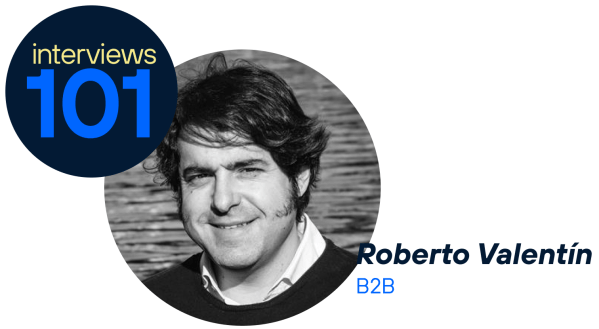What does your job at Telefónica involve?
I work in the General Secretariat of Telefónica S.A., in the corporation. I perform various functions in the team of the general secretary, Pablo de Carvajal.
One of them is the management of the legal team that is in charge of supporting the group’s digital projects in terms of privacy
For this reason, we contribute to the legal design of the Open Gateway project and the products and services developed and marketed by Telefónica Innovación Digital. We are also the team of lawyers who advise the corporation on data protection and privacy, not from the point of view of regulatory compliance and group policies, as compliance is concerned, but from a legal and contractual point of view.
Another of my roles at Telefónica is the regulation department, which I share with another regulation department of the group that is more focused on strategic regulation projects. In my unit, on the other hand, we are responsible for the coordination and monitoring of the new regulation that applies to the business in the different countries of Telefónica’s footprint, as well as the most relevant regulatory issues in each of those countries.
Finally, I monitor and coordinate certain issues with the general secretariats of our footprint.
This, together with the regulatory side, allows me to be in close contact with our countries and this is very rewarding because each country has different legislation and regulations and the issues and problems are very varied and different. In addition, working with the teams in our OBs is very stimulating.
For those of us who don’t know, could you explain what regulation is?
Regulation is rules that governments approve to protect economic, social and technical aspects in sectors and activities that they consider critical and of public interest.
With regulation, all the actors, public and private, administration and companies that intervene in a certain sector know perfectly well what the rules of the game are in that sector.
This gives rise to what we call regulated sectors, such as the telecommunications sector to which Telefónica belongs, which are areas of economic activity in which, although there is free competition, there are certain requirements and demands or limits that do not exist in areas of economic activity that are not regulated sectors.
Other regulated sectors are energy, hydrocarbons, healthcare
Legislation is normally identified with the laws or regulations that are approved by the legislator (in our country, the Congress of Deputies and the Senate), regulation is broader because, in addition to regulations and laws, it can be reflected in criteria, decisions and similar acts of governments, public administrations and regulatory bodies.
What are the objectives of regulation?
In general, regulation aims to guarantee the efficient and competitive functioning of markets and to generate legal certainty and security in them and, depending on the type of regulation, it also seeks to protect health, the economy or the environment.
It is important because, as I have mentioned, it exists in sectors of activity that are considered critical, of public interest or essential and for this reason, the State understands that it has to intervene so that they function correctly and competitively
However, regulation always involves requirements that exist in regulated sectors and do not exist in other sectors. Therefore, for companies in regulated sectors, an excessive regulatory burden can pose difficulties with which they have to live with in their day-to-day business.
It is essential to strike the right balance between the indispensable regulatory burden and the right incentives for companies to be able to compete and maximise their business activity and business objectives.
What types are there?
A distinction is usually made between ex ante regulation and ex post regulation. The difference hinges on the idea of whether a given market, for example, the telecommunications market, is competitive or not.
If it is understood that it is not, regulation imposes requirements on certain companies already operating in that market to make it easier for new entrants to do so and for the market to be truly competitive.
If it is understood that it is, normally these prior requirements no longer exist and what is examined is whether the market is functioning correctly and the process of company mergers is controlled so that it does not cease to be so.
At Telefónica we understand that if a market is already competitive, as is the case of the telecommunications market in Spain, ex ante regulation should tend to disappear and only ex post regulation should be maintained. This is one of the main messages of our public policy.
Moving on, another important project you are involved in is Open Gateway. Could you explain what it is about and how important it is for the telecommunications sector
Open Gateway is a profoundly innovative project that aims to change the way we understand telecommunications networks.
Instead of considering the network solely as an asset through which data passes, Open Gateway turns the network into a kind of super computer that makes it possible to offer the network’s capabilities, such as better latency, to third parties, basically developers, so that with these capabilities they can develop and offer innovative products and services to the public.
It is also a global project as it has been designed and finalised at GSMA and more than twenty telecommunications companies have joined the project worldwide, not only in Europe.
The GSMA is working on the contractual and technical standards that are used by telecommunications companies in the same way all over the world, also through the standardisation of the interfaces or APIs with which developers connect to each telecommunications network, allowing them to make their products and services globally scalable.
Open Gateway means redefining our network and our services. Launching the project requires a huge amount of coordination, not only with the other telecommunications companies in GSMA but also with what we call ‘marketplaces’ or aggregators, in the hands of players such as Microsoft, Ericsson or Amazon, where third-party developers with a potential interest in our network capabilities congregate.
Who is someone who works at Telefónica that you consider to be excellent in their job and why?
There are so many excellent people in this company that it is difficult for me to nominate just one, but if I have to, I would nominate Ana Forcada, my head of regulation. Ana is not only a wonderful person, but also a tireless worker with a great business vision, common sense in tackling problems and finding solutions, efficiency and great management skills.












